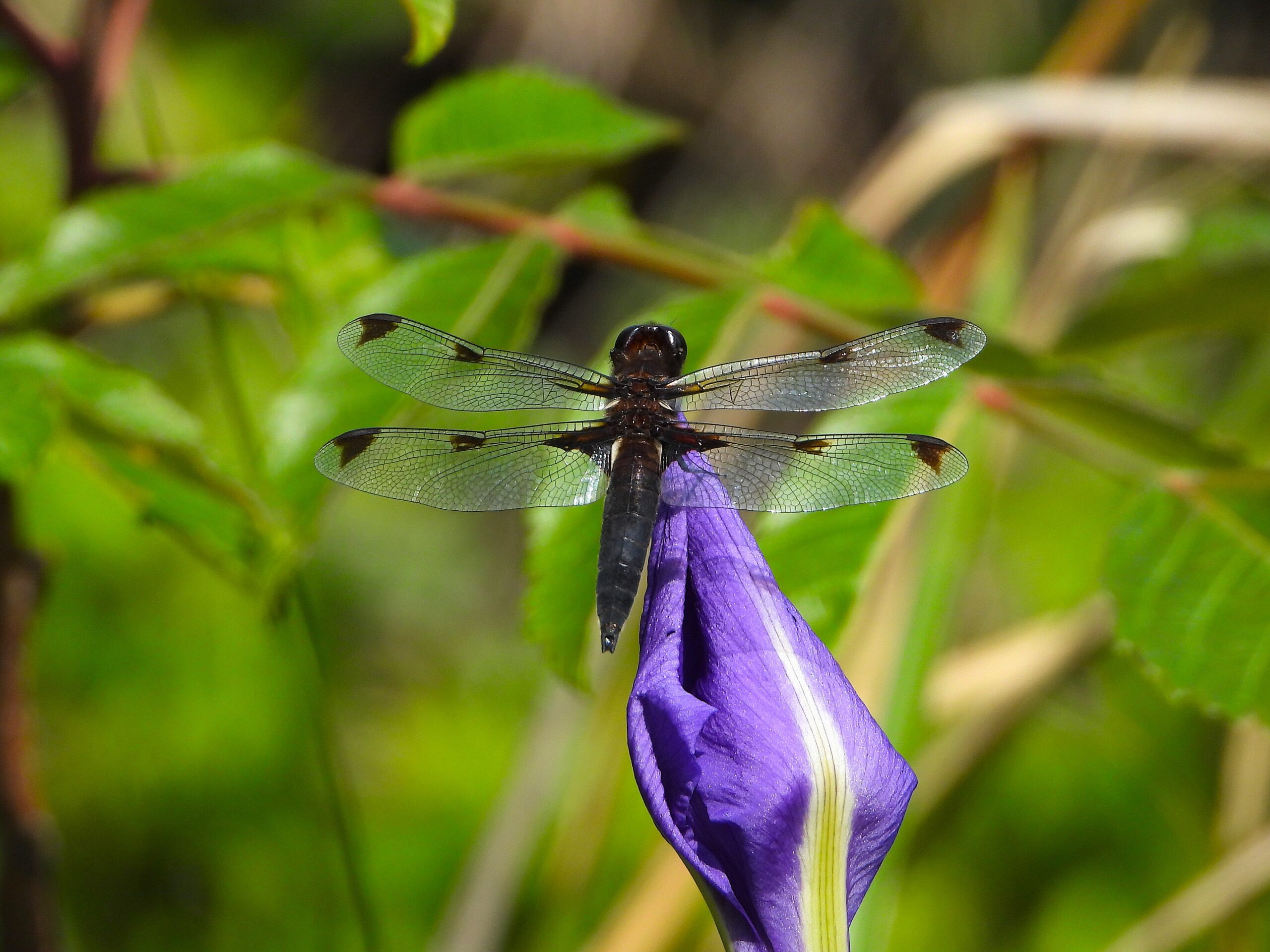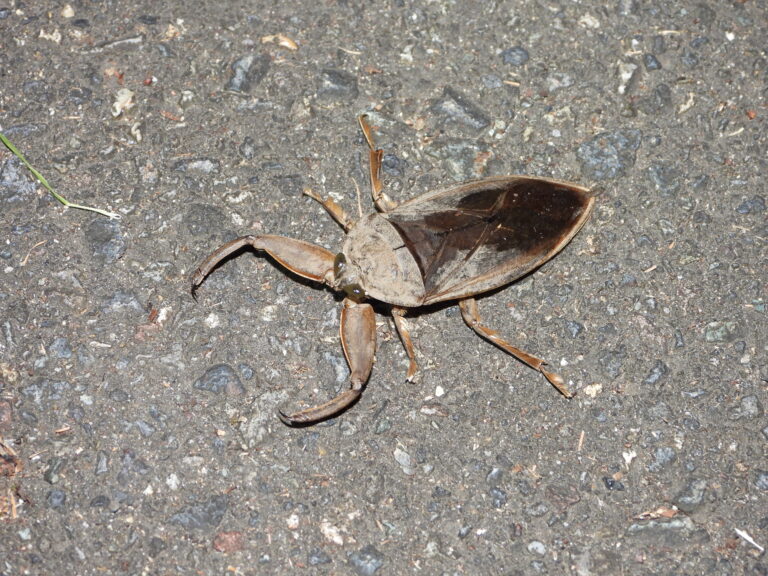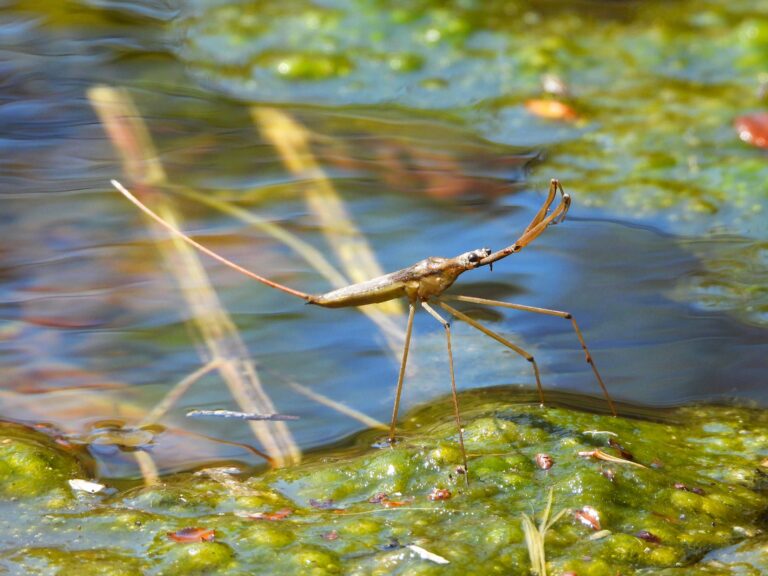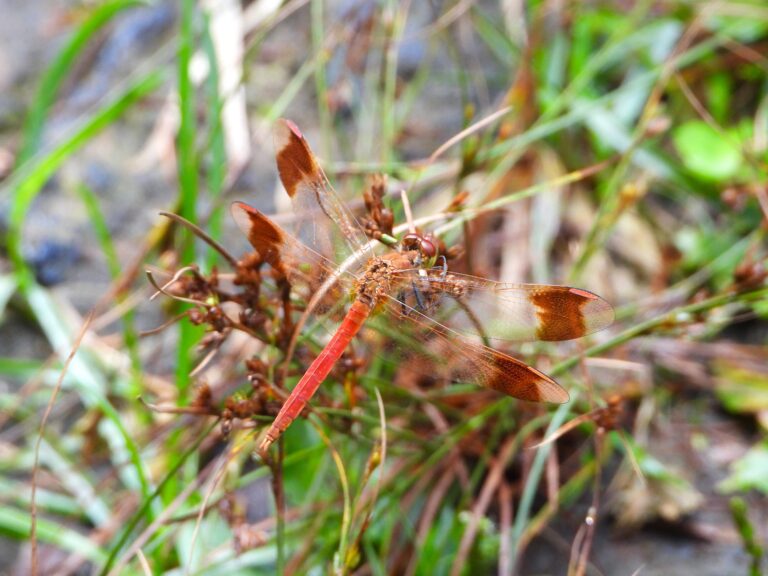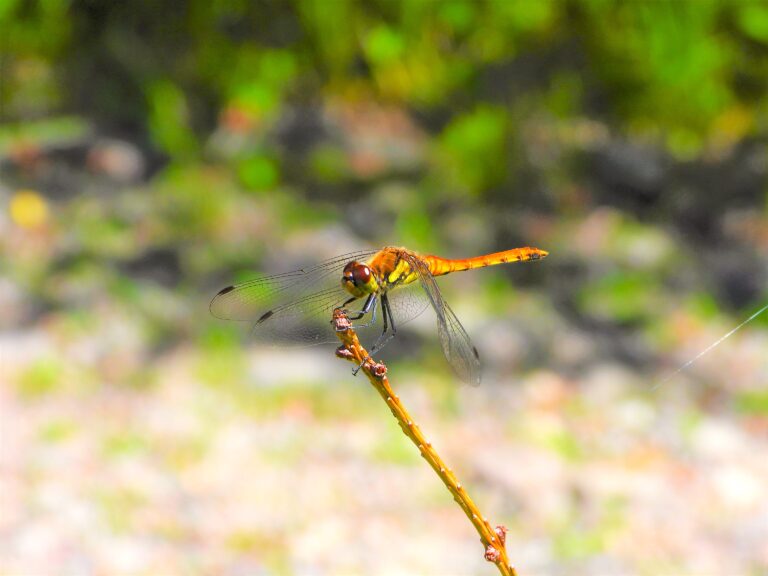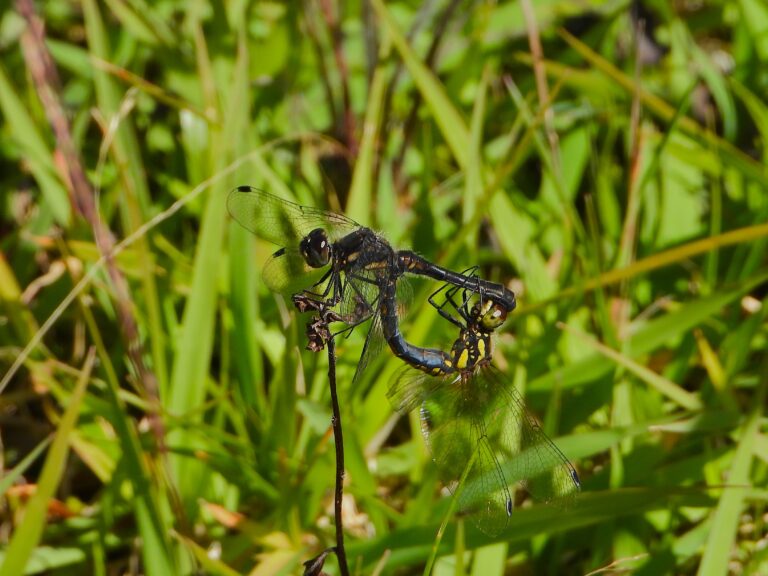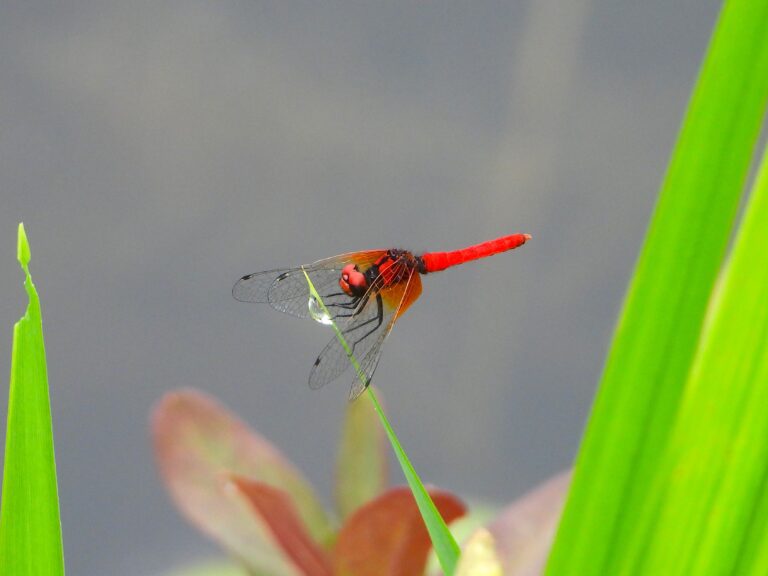Bekko Tombo (Libellula angelina) – Wildlife of Japan
Introduction
The Bekko Tombo is one of Japan’s most endangered dragonflies. Once common in lowland ponds and wetlands, it has suffered a rapid decline due to habitat loss, shoreline modification, water-level fluctuation, and invasive predators. It is listed as Critically Endangered on both Japan’s Red List and the IUCN Red List. Also known in Japan as the “Bekko dragonfly.”
Appearance
Adults measure about 38 mm long with a wingspan of around 7 cm. Each wing bears a large dark patch; newly emerged individuals glow amber like tortoiseshell—hence the Japanese name “Bekko.” Within two weeks, males darken to black-brown while females remain brown. The distinctive pattern makes this species visually unlike any other dragonfly.
Habitat
Prefers shallow, old lowland ponds with dense stands of reeds and cattails—traditional rural ponds that are easily degraded by infill, bank hardening, and water-level changes.
Life Cycle & Seasonality
Univoltine: larvae develop over one year. Adults appear from late March to May, peaking in mid to late April. Mating and oviposition occur along vegetated pond margins.
Distribution
Found in East Asia (Japan, China, Korea). In Japan, small surviving populations occur in Shizuoka, Yamaguchi, and Kyūshū (Fukuoka, Kumamoto, Ōita, Kagoshima). In Shizuoka, the species persists in rural ponds around Iwata and Hamamatsu, where local groups restore vegetation and remove invasive fish. Nationally, known sites have dropped from 23 in 1994 to only 11 by 2015.
Conservation Status & Threats
Japan: Designated a Domestic Endangered Species in 1994; Imuta-ike (Kagoshima) was declared a Habitat Protection Area in 1996. Major threats include pond reclamation, bank hardening, water-level changes, and invasive predators such as red swamp crayfish, largemouth bass, and nutria.
Global: Listed as Critically Endangered by the IUCN due to severe habitat loss and fragmentation across East Asia.
Where to See in Japan
Imuta-ike, Kagoshima — Viewable from designated paths in spring.
Noyori-Shinike, Ōita — Observation events in late April–early May.
Rural ponds of Iwata & Hamamatsu, Shizuoka — Restricted-access conservation sites managed under local protection programs.
Author’s Impression
Unlike any ordinary dragonfly, the Bekko Tombo’s pattern is truly one of a kind. Its freshly emerged amber wings shining in sunlight looked like a living jewel.

